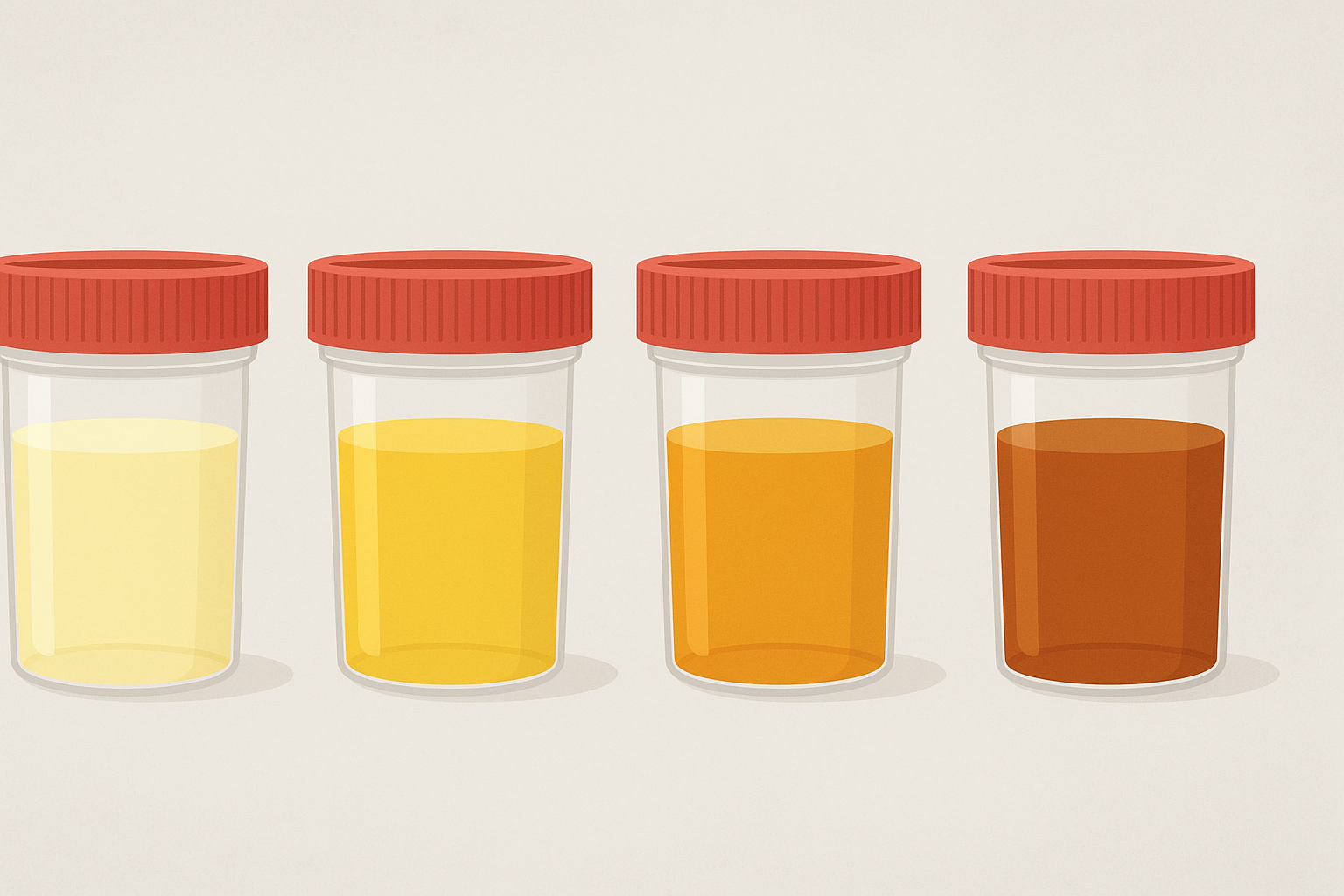What Does My Urine Colour Mean?

You might not think about it often, but the colour of your urine can tell you a lot about your hydration, diet, and overall health.
While small changes are normal, persistent differences in colour or smell can sometimes point to dehydration, diet changes, or even medical conditions.
At Valui Healthcare, we believe that better continence starts with understanding your body and that includes the simple signs your urine may be giving you.
Why Urine Colour Matters
Urine gets its colour from a pigment called urochrome, which becomes lighter or darker depending on how much water you drink.
A healthy urine colour usually ranges from pale straw to light yellow, but other shades can appear based on hydration, medications, or foods.
Here’s a quick guide to what those colours can mean:
🟡 Pale Yellow to Light Straw – Ideal Hydration
This is the “sweet spot.”
It means you’re well-hydrated and your kidneys are doing their job efficiently.
Tip: Keep sipping water regularly through the day, especially in warmer weather or when exercising.
🟠 Dark Yellow or Amber – Dehydration Alert
Your body may be low on fluids.
When dehydrated, your urine becomes more concentrated and darker.
Drink more water and monitor again later in the day.
If the colour remains dark even after good hydration, check with your GP.
🟤 Honey or Tea-Coloured – Possible Liver or Muscle Issues
This can indicate more than dehydration.
Brown or dark amber urine may signal liver problems, severe dehydration, or muscle breakdown (rhabdomyolysis).
If it persists, seek medical advice immediately.
🔴 Pink or Red – Possible Blood or Certain Foods
Beetroot, rhubarb, and blackberries can tint urine pink or red — that’s harmless.
However, if you haven’t eaten these and your urine looks reddish, it could be a sign of blood in the urine (haematuria) caused by infection, kidney stones, or other conditions.
⚠️ Always have this checked by your GP.
🟢 Green or Blue – Food Dyes or Medication
This unusual colour can come from certain vitamins, medications, or foods with artificial colouring.
Rarely, it can indicate a urinary infection. If unsure or persistent, ask your healthcare provider.
⚪ Cloudy or Milky – Infection or Protein in Urine
Cloudy urine may mean a urinary tract infection (UTI) or excess protein in the urine.
If it’s accompanied by odour, pain, or fever, seek medical help promptly.
When to See a Doctor
Check with your GP or continence nurse if you notice:
- Persistent dark, red, or cloudy urine
- Pain or burning when urinating
- Strong odour that lasts more than a few days
- Any change not linked to diet or medication
How Valui Supports Hydration and Continence Health
Staying hydrated is one of the best ways to prevent bladder irritation and incontinence.
Valui encourages healthy routines that combine:
- Regular water intake
- Balanced nutrition
- Proper continence aid use to keep skin dry and protected
And remember - hydration doesn’t just support bladder function, it also keeps the skin healthy and reduces infection risk.